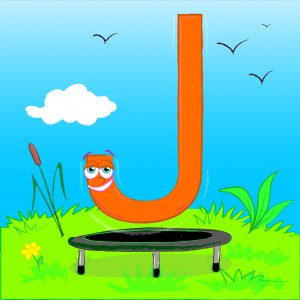According to the 2013 “Nation’s Report Card,” just 42 percent of fourth-graders and 35 percent of eighth-graders scored at or above the proficient level in math. Worse yet, only 35 percent of fourth-graders and 36 percent of eighth-graders scored proficiently in reading.
These are the findings of the most recent study by the National Assessment of Educational Progress (NAEP), which is given to sample fourth and eighth-graders every two years.
Remember, reading is the most fundamental skill upon which all future learning is based. How can our children possibly be expected to attain higher education when they haven’t mastered reading by eighth grade? We desperately need to improve these statistics. Their futures depend on it.
Much attention these days is focused on the critical importance of early literacy. Key factors include oral language, alphabet knowledge, phonics, and knowledge about print. Years ago, this was referred to as “reading readiness” and was largely focused on targeted instruction in kindergarten and early first grade. According to today’s research, however, learning to read and write is an ongoing and emerging process that begins in infancy. That means that virtually all adult interaction serves to support children’s language and literacy development.
Parents play a critical role in helping to establish a solid literacy foundation for their children. Parents must be cognizant of the fact that meaningful daily interaction with their child is key to doing so. Interacting with your child in day-to-day activities and simply talking, reading, and singing goes a long way.
Phonological awareness begins very early on with with rhymes and chants that enable children to identify and manipulate the individual sounds that make up spoken words. It’s also a good predictor of their potential success in learning to read. We all know the treasured nursery rhymes. My favorite is “Little Bo Peep.”
Now you can provide your child with a nursery rhyme for each alphabet letter! Our loveable letters are brought to life according to their alphabetic structure (or anatomy), so children can make sense of letter shapes and sounds. This helps break down that barrier that all children face in having to associate abstract shapes with letter names and sounds.
Once your child memorizes the fun and easy rhyming verses, they are equipped with visual and auditory recall of the four letter components, including how to write them, so reading and writing occur concurrently and interrelatedly. http://www.amazon.com/Alphabet-Anatomy-Meet-Capital-Letters
You can begin reciting Alphabet Anatomy’s rhyming verses to your child in infancy along with other favorite nursery rhymes. You’ll be assisting in your child’s development of phonological awareness, an important factor in the foundation for proficient reading.
Meet Letter J… He’s jumping for joy at the thought!
J jumps down straight, then jolts up on the left,
his most joyful trick at which he’s quite deft.

